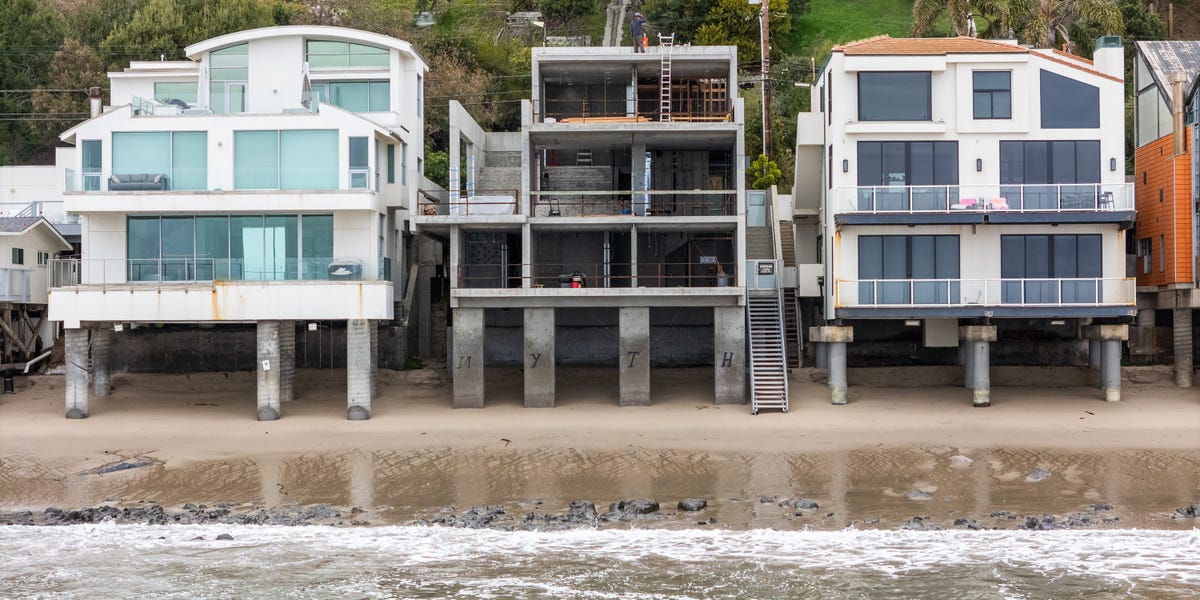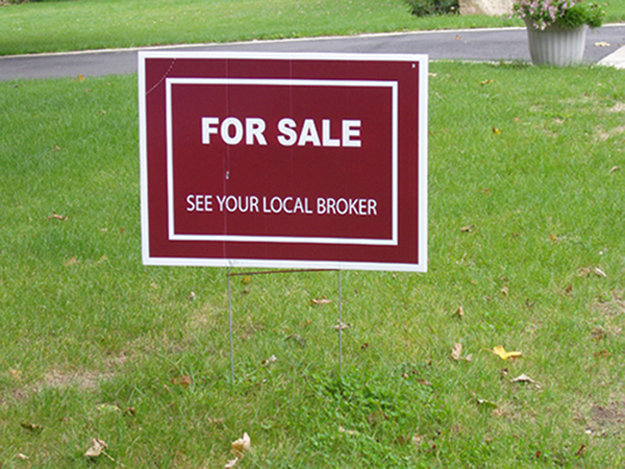E
uropean real‑estate was valued at USD 716.96 bn in 2024 and is projected to hit USD 1,158.85 bn by 2033, rising from USD 756.25 bn in 2025 at a CAGR of 5.48 %. The sector covers land and permanent structures, regulated by national land laws, urban‑planning rules and EU sustainability directives. It is fragmented linguistically, legally and fiscally, yet strongly supervised by public authorities. In 2023, 69 % of Europeans owned homes, reflecting deep cultural attachment to property. The Commission’s Renovation Wave targets 35 million retrofits by 2030, directly affecting asset values and redevelopment incentives.
**Drivers**
*Housing shortages* in major cities fuel demand. Population growth and internal migration outpace new construction. In Germany, 400 000 dwellings are needed annually, yet only 280 000 were built in 2023. Waiting lists for social housing in Amsterdam exceed seven years. Densification policies such as France’s Loi Elan streamline permits for multi‑family buildings near transit hubs, sustaining pressure on residential real‑estate.
*Home‑ownership culture* remains a cornerstone of the market. Ownership rates are highest in Southern and Eastern Europe, supporting intergenerational wealth transfer and resilience against economic swings. Even in traditionally rental‑dominant markets, policies encouraging ownership are gaining traction, buffering volatility and sustaining transaction activity.
**Restraints**
*Zoning and permitting* delays limit supply response. Heritage protection and environmental reviews can extend approvals beyond the usual 2–3 months, with some projects delayed over three years. Germany’s building code imposes minimum plot sizes that reduce developable density, inflating land costs and reducing affordability.
*Rising interest rates* dampen transaction volumes. ECB tightening has increased borrowing costs, reducing purchasing power, especially for first‑time buyers. Mortgage applications fell even in strong fundamentals markets like Sweden, curbing demand among younger and lower‑income households.
**Opportunities**
*Urban regeneration* of brownfields offers growth without greenfield encroachment. EU regeneration programmes support projects such as affordable housing in Lisbon, aligning with sustainability goals and addressing housing gaps.
*Build‑to‑rent and institutional rental* models fill tenure gaps. Professional management of purpose‑built rental assets is expanding, especially in high‑urbanization markets. Sweden’s policy changes accelerate approvals for rental projects; France’s tax incentives encourage long‑term rentals; Ireland’s national housing plan reserves shares for institutional investors. These models improve quality, security and yield stability.
**Challenges**
*Climate risk* threatens long‑term viability. Physical risks from flooding, sea‑level rise and wildfires affect valuations and insurability. Over 17 million Europeans live in high‑flood risk areas, with exposure exceeding €1.2 trillion. The Netherlands faces continuous dike investment needs, while southern Europe confronts escalating wildfire threats. ECB stress‑tests on climate exposure highlight potential loan defaults.
*Fragmented legal and tax frameworks* hinder cross‑border investment. Each country’s distinct rules on foreign ownership, property taxation, lease terms and tenant protections raise due‑diligence costs. Inheritance laws vary widely, complicating estate planning for international owners. A 2023 Urban Land Institute survey found 68 % of institutional investors cite regulatory fragmentation as the top obstacle to scaling European real‑estate allocations.
**Report Coverage**
- **Metrics**: Market size (2024‑2033), CAGR 5.48 %, segments by business model, property type, end‑user, region.
- **Analyses**: Global, regional, country‑level; segment‑level; DROC; PESTLE; Porter’s Five Forces; competitive landscape; investment opportunities.
- **Regions**: UK, France, Spain, Germany, Italy, Russia, Sweden, Denmark, Switzerland, Netherlands, Turkey, Czech Republic, Rest of Europe.
- **Key players**: Keller Williams, Simon Property Group, RE/MAX, Colliers, Coldwell Banker, Brookfield, Prologis, CBRE, Class A.
**Segmental Analysis**
- *Business model*: Property sales dominate (62.7 % share 2025‑2033). Cultural norms and fiscal policies (e.g., Spain’s mortgage tax deductions) sustain sales. Rental segment expected to grow fastest (CAGR 7.8 %) due to urbanization, demographic shifts and institutional build‑to‑rent.
- *Property type*: Residential holds the largest share, driven by shortages, population growth and policy emphasis on social stability. Commercial real‑estate grows fastest (CAGR 6.9 %) with logistics, data centers and flexible workspaces.
- *End‑user*: Individuals/households lead, supported by cultural and policy orientation toward ownership. Corporates & SMEs rise, expected to grow at CAGR 8.1 % due to digital transformation and supply‑chain restructuring.
**Regional Highlights**
- *Germany*: 24.6 % market share, strong tenant protection, ESG‑certified office development, near‑shoring logistics boom, strict rent control, Energiewende retrofits.
- *UK*: 18.6 % share, mature investment landscape, dynamic private‑rental sector, post‑Brexit regulatory evolution, Future Homes Standard drives net‑zero construction.
- *France*: Steady growth, proactive urban planning, Loi Elan and Loi Pinel+ support multi‑family and long‑term rentals, Paris leads sustainable office development, innovation campuses blend housing, research and commerce.
- *Spain*: Tourism‑driven demand, Golden Visa attracts foreign buyers, coastal regions high in international purchases, Madrid and Barcelona focus on office decarbonization, high solar irradiance accelerates net‑zero adoption.
- *Italy*: Heritage preservation, family ownership patterns, renovation incentives, Milan leads commercial innovation, Po Valley logistics expansion, National Recovery Plan funds urban regeneration.
**Competitive Landscape**
Key players prioritize sustainability, retrofitting assets to EU energy standards and building net‑zero projects. They diversify into logistics, data centers and mixed‑use hubs, partner with municipalities and tech firms for smart‑city integration, and adopt flexible leasing and digital tenant platforms. Green financing instruments (sustainability‑linked bonds) fund large‑scale renovations. Competition is intense among integrated developers, institutional landlords, REITs and agile local operators. Regulatory complexity creates both barriers and opportunities for players with local expertise.
**Key Players & Strategies**
- *Vonovia SE*: Largest residential landlord in Germany, Sweden, Austria; focuses on energy‑efficient retrofits and affordable rentals, expands digital tenant services.
- *Unibail‑Rodamco‑Westfield*: Premium retail and mixed‑use developer across France, Netherlands, Germany, Spain; transforms malls into experiential centers, partners on innovation districts and affordable housing.
- *Segro plc*: Logistics and industrial specialist in UK and continental Europe; builds state‑of‑the‑art distribution centers near transport hubs, offers flexible leases for SMEs and e‑commerce.
**Conclusion**
The European real‑estate market is a socially embedded, policy‑driven sector with robust growth prospects driven by housing shortages, cultural ownership preferences and institutional rental expansion. However, it faces significant restraints from regulatory fragmentation, permitting delays and rising borrowing costs, while climate risk and fragmented legal frameworks pose long‑term challenges. Opportunities in urban regeneration, build‑to‑rent and sustainability‑aligned development offer pathways for resilient growth. Key players leverage sustainability, digitalization and strategic partnerships to navigate a complex, fragmented landscape and capture value across residential, commercial and institutional segments.














